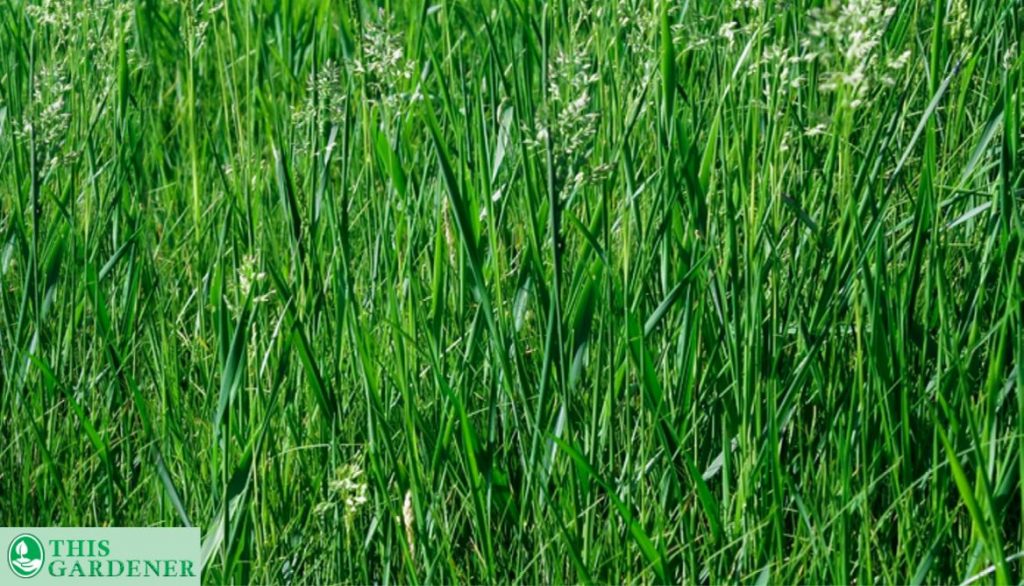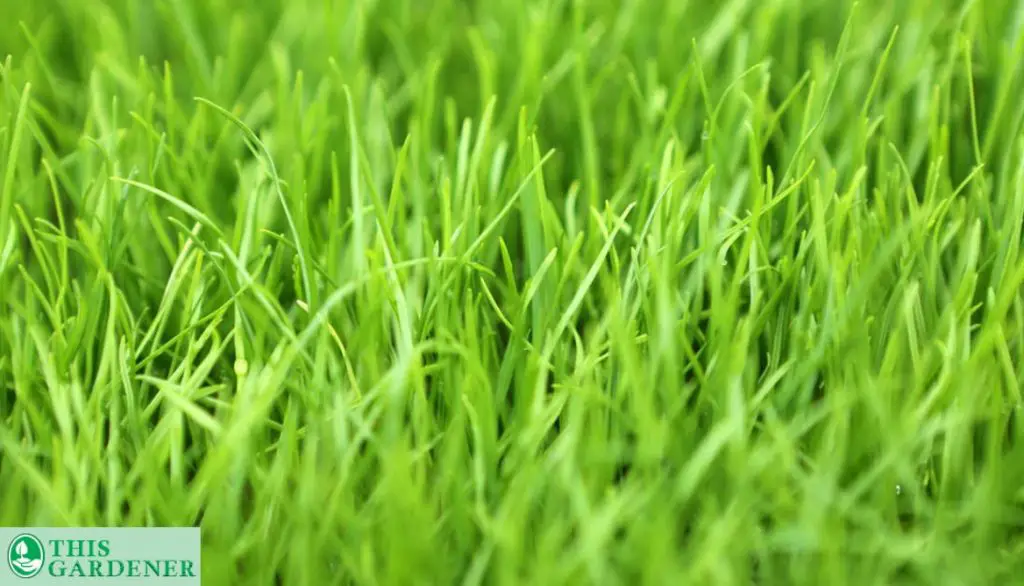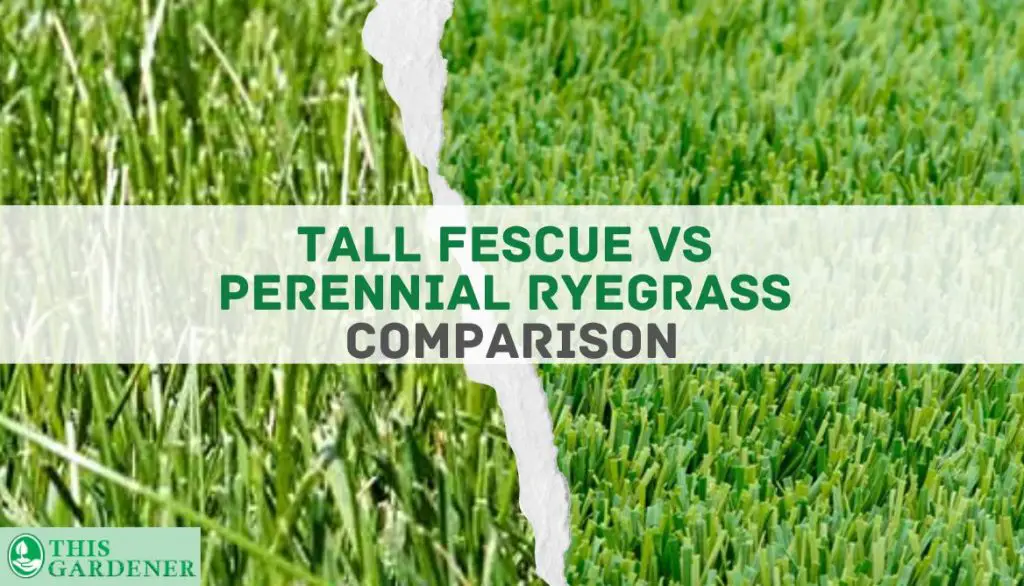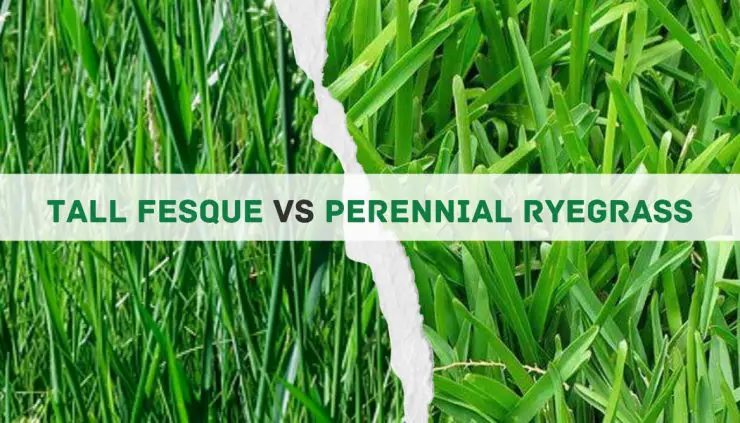Grasses, the nature’s gift that beautifies your lawn or scenery around your home. When we talk about lawn then turf choice and grass types come to our mind. A comparison of tall fescue vs perennial ryegrass will give us a very strong understanding of the whole scenario!
Each type of grass has its forte such as Fescue being a resilient, durable, and ideal animal fodder. While ryegrass is a quick grower, turf sustainer, and aesthetically appealing grass type.
People chose fescue solely for its high-temperature tolerance, weed-killing ability, and hassle-free maintenance. While ryegrass is an ideal choice for people when they want beauty, automatic regrowing grass, and versatile grass type.
Let’s dive down into a detailed comparison so you can choose the best grass easily.
Contents
A Quick Comparison of Tall fescue vs Perennial Ryegrass
Tall fescue maintains the look of your lawn. Perennial ryegrass is suitable to over seed the lawn during warm climates. Both grass types go well together as a combination to maintain your lawn.
Key Differences Between Tall fescue vs Perennial ryegrass
Tall Fescue | Perennial Ryegrass |
High tolerance to sunlight | Ideal for overseeding or reseeding |
Tolerates heat and well-drained soil | It will die if the weather becomes warm |
Has a dark color | Bright green color |
Takes about 7-21 days to grow | It can rapidly grow in about 5-10 days |
Tall Fescue is best to use as lawn turf.
What’s Tall Fescue?

This type of grass seed is widely used as a pasture grass type. You may notice those bright green pasture grass on schools, colleges, and playgrounds. Yes, we are talking about those!
Features:
- Looks very attractive as a greenery
- Broad and flat leaves
What’s Perennial Ryegrass?

If you consider ryegrass vs tall fescue lawns then you may find ryegrass to be the winner to be suitable for residential and commercial lawns. It has the ability to withstand traffic and grows really well during cool climates. It is a choice as a lawn turf.
Features:
- Classified as cool season grasses
- Grows in bunches
- Has a glossy underleaf
Comparing Tall fescue vs Perennial Ryegrass

Annual ryegrass and tall fescue can be compared in many ways. They may seem somewhat similar in some cases but they are also very different due to some features.
Amidst the tall fescue perennial ryegrass argument, both have their own forte. While both perennial ryegrass and tall are ideal as turf but for a much lush and rich look, people may prefer ryegrass in the end. Hence, ryegrass wins the war!
Looks:
Tall fescue perennial ryegrass can have several differences. Out of which two are the major differences. Tall fescue, and perennial ryegrass both have very different colors and very different physical appearances. Tall fescue is a bunch grass while perennial rye is turf grass.
Tall Fescue Identificaiton
- Dark Green in color
- The leaves have noticeable veins on it
Perennial Ryegrass Identification
- Apparently has a smooth green color
- The upper leaf has a duller color
- Perennial ryegrass has a little rough coarse texture
Sod Formation & Growth:
While loking at the ryegrass vs tall fescue both the grasses then perennial rye is much easier to grow than grass as it grows faster and sod formation is easier on this type of grass. On the other hand, tall fescue maintains well but does not regrow instead needs reseeding.
Best Use Cases:
Fescue is an excellent source of fodder for horses and can be a smart choice for lawn turf if you have kids and pets at home.
Ryegrass is an intelligent option for golf courses, sports fields, and activity fields. As it can regrow fast and withstands heavy traffic easily.
Required Soil & Optimum pH:
Perennial ryegrass and tall fescue both have separate demands when it comes to soil requirements.
Fescue is compatible with various types of soil which may be sandy and even heavy clay soil. It needs a pH value of 5.5-7. While comparing perennial ryegrass, it requires mild fertile to highly fertile soil to grow. Making it demanding!
Water Needs:
Tall fescue does not need a lot of water as it has deep roots. But to prevent it to become dormant during summer, you would need to water it. When it is time to water the grass, a 1-1.5 inch once-in duration of 7-10 days is enough.
Fertilizers:
Tall fescue needs about 1-3.5 pounds of nitrogen for about 1000 sq feet per year. It is recommended to apply once in the fall and second during spring.
Perennial rye has a requirement of 1 to 5 pounds of nitrogen per 1000 sq feet per year. Most perennial ryegrass lawns need fertilizer during late summer or early days of the fall season. While some may need it during the spring season.
Temperature, Sun & Shade:
Reaching the conclusion of perennial ryegrass and tall both ryegrass takes the lead in terms of shade tolerance, temperature and the sun.
Durability:
Fescue is known for its durability and can withstand a high amount of wear and tear. The same goes for perennial ryegrass which can additionally regrow and cover bare patches.
Diseases & Common Pests:
Some common diseases that may occur in tall fescue are brown patches, seedling disease, and grey leaf spots. While pests that can become a hassle are grubs, armyworms, sod webworms, and cutworms. These damage tall fescue lawns.
Perennial ryegrass has a low resistance to diseases and pests. The very high amount of heat and humidity is a major cause of grey leaf spot disease. So, fescue dominates the ryegrass vs tall fescue with flying colors!
Mowing:
Tall fescue needs frequent mowing as it is a fast-growing grass. You may want to maintain a height of about 2-4 inches while mowing the grass. Using a sharp mowing blade is ideal for excellent quality results.
Maintenance Cost:
Ryegrass is a demanding grass type as it grows quickly. So, trimming, watering, and fertilizing is frequent thus making for high maintenance cost.
Having a deep root system, fescue doesn’t demand high maintenance. It needs less water and can survive well. When we compare perennial ryegrass vs tall then tall fescue wins!
Perennial Ryegrass vs. Tall Fescue: Which Option is Right for You?
It depends on the use of the grass and where you want the grass planted.
In terms of Climate:
Fescue is highly tolerant to heat and cold. Thus, making it a winner and suitable choice if you live in extreme temperatures or cold winters.
Growth Zones:
Both of these grasses are cool season grasses that grow well in the northern half region. Thus, making them ideal for a number of places they can survive.
Bottom Line: One should go with fescue if the talk is about growth
In terms of Maintenance:
Ryegrass is a very high-cost grass when it comes to maintenance. Fescue can manage well with less maintenance since it does not grow very fast.
Bottom Line: Fescue takes the lead here too!
In Terms of Diseases & Pest Problems:
Ryegrass is famous to be known as the host of many bacteria and viruses.
Fescue performs fairly well in this aspect. It is susceptible to diseases and pests but it is more durable than the other grasses.
Bottom Line: In the comparison between ryegrass vs tall fescue, Fescue has the upper hand in being more durable.
What are the Similarities Between Tall Fescue and Perennial Ryegrass?
Both types of grasses have been infamous as turf grasses for lawns. |
Both the grasses are known to strive in different climatic conditions. |
Both of them are cool-season grasses that can ideally be planted in the fall season or early spring. |
Ryegrass and tall fescue both need to be mowed once a week and maintained at a two-inch height. |
Germination Time:
Ryegrass seeds need a short duration of 5 to 7 days of germination time. While the other needs one to three weeks of seed germination time.
Seed Lasting Duration:
Many research suggests that ryegrass and fescue seeds can last somewhere between 3-5 years in ideal storage conditions before being used.
Hot Weather Struggle:
Fescue can easily struggle in hot and dry weather conditions. But ryegrass will not be able to survive hot weather and dry conditions.
FAQ
Can I mix Tall fescue with perennial ryegrass?
No, Tall Fescue and Perennial Ryegrass cannot be grown together. Basically, fescue is an alternative. Where ryegrass cannot increase due to summer soil, you can simply grow tall fescue.
Why is Perennial ryegrass so popular?
The reason why this type of grass is famous is that it grows exceptionally as a cool season grass. It is a high yielding grass during seasons when growth is complex and the pasture is lush and can regrow quickly. Also, the grass is very persistent towards high traffic and is ideal as grazing grass for livestock.
Will Tall fescue grass choke out weeds?
Tall fescue grass will not choke out the weed. To make sure that your grass survives, you need to take good care of the fescue grass by providing it with sufficient nutrients and care.
Does Tall fescue lawns stay green all year long?
Considered one of the ideal seed mixtures for home lawns, tall fescue grass is resilient to drought and highly resistant to shade making it a good choice. If you are looking for a grass type that gives you that amazing aesthetic look all year round then fescue should be your choice. It remains green during the whole year.
What should I Tall fescue bluegrass with?
The most dominant combo is Tall Fescue and Kentucky Bluegrass. An ideal mix of seeds would constitute about 10% bluegrass and 90% tall fescue.
Will Perennial ryegrass choke out weeds?
Perennial ryegrass grows very quickly and spreads very well. In the majority of the cases, the ryegrass outgrows most weeds and chokes them out. Healthy ryegrass can dominantly kill out most of the hassling winter lawn weeds.
Does Tall fescue bluegrass have runners?
No, tall fescue does not have runners. It is categorized as a bunch of grass and it would mostly need to be overseeded to sustain that thick lush turf all year round. If you do plan to overseed the lawn then the best time to do it is during the fall season.
Is Perennial Ryegrass good for high-traffic areas?
Perennial ryegrass has a reputation for toughness. Ever seen those lush green and even turf on a golf course with hundreds of people walking all day? Yes, that’s perennial ryegrass. It is tough, drought resistant, survives two seasons easily and has thick blades.
Will Perennial Ryegrass fill in bare spots?
While most grasses have the advantage of filling bare spots. Sadly, perennial ryegrass is a bunch type grass and will not spread. So, reseeding is the only option to fill those bare spots quickly.
Conclusion
To conclude the topic, it all depends on the use of the grass and what your requirement is that makes the grass type suitable for you.
Climate, maintenance cost, and traffic all are major factors in choosing the suitable grass type. But always keep in mind to select after comparing both. Both types of grass have situations perks and can be an advantage in the long run.
References:
Comparison: Perennial Ryegrass vs Tall Fescue. Lawnmower Guru
Tall Fescue Vs. Perennial Ryegrass: Comparison Between These Species. Back Garden
Tall Fescue: The Complete Guide. NG Turf
Perennial Ryegrass VS Tall Fescue. Revive Garden
Perennial ryegrass — Lolium perenne. University of California
- How to Get Potatoes to Sprout Eyes: Detailed Growing Guide with 3 Options - July 31, 2023
- Weight of a Medium Potato: Revealed in Detailed Guide - July 29, 2023
- Maris Piper Potatoes: 9 Substitutes You Should Know About - July 27, 2023
Hello! I’m Jessica Zander, a garden coach and consultant based in the Boston area (zone 6b), offering virtual consultations across the country and Canada.
I’ve been passionate about gardening since the early 1990s, and in 2022, I launched You Can Do It Gardening to empower individuals to feel more confident in their gardening endeavors.
Following a 30-year career in nonprofit finance and operations, I transitioned out of that field in mid-June of 2023 due to the growing demand for coaching services. Interestingly, my years of presenting financial statements to boards and finance committees proved to be valuable experience for teaching people about gardening! I enjoy sharing skills, providing guidance and suggestions, and collaborating efficiently with clients to make significant improvements to their outdoor spaces, both small and large. I also regularly teach at the Arlington Continuing Education and Cambridge Adult Education.
My approach is direct and practical, akin to Mary Poppins, but tailored to your garden. Clients find satisfaction in saving money and taking pride in their own gardening achievements.


Add comment